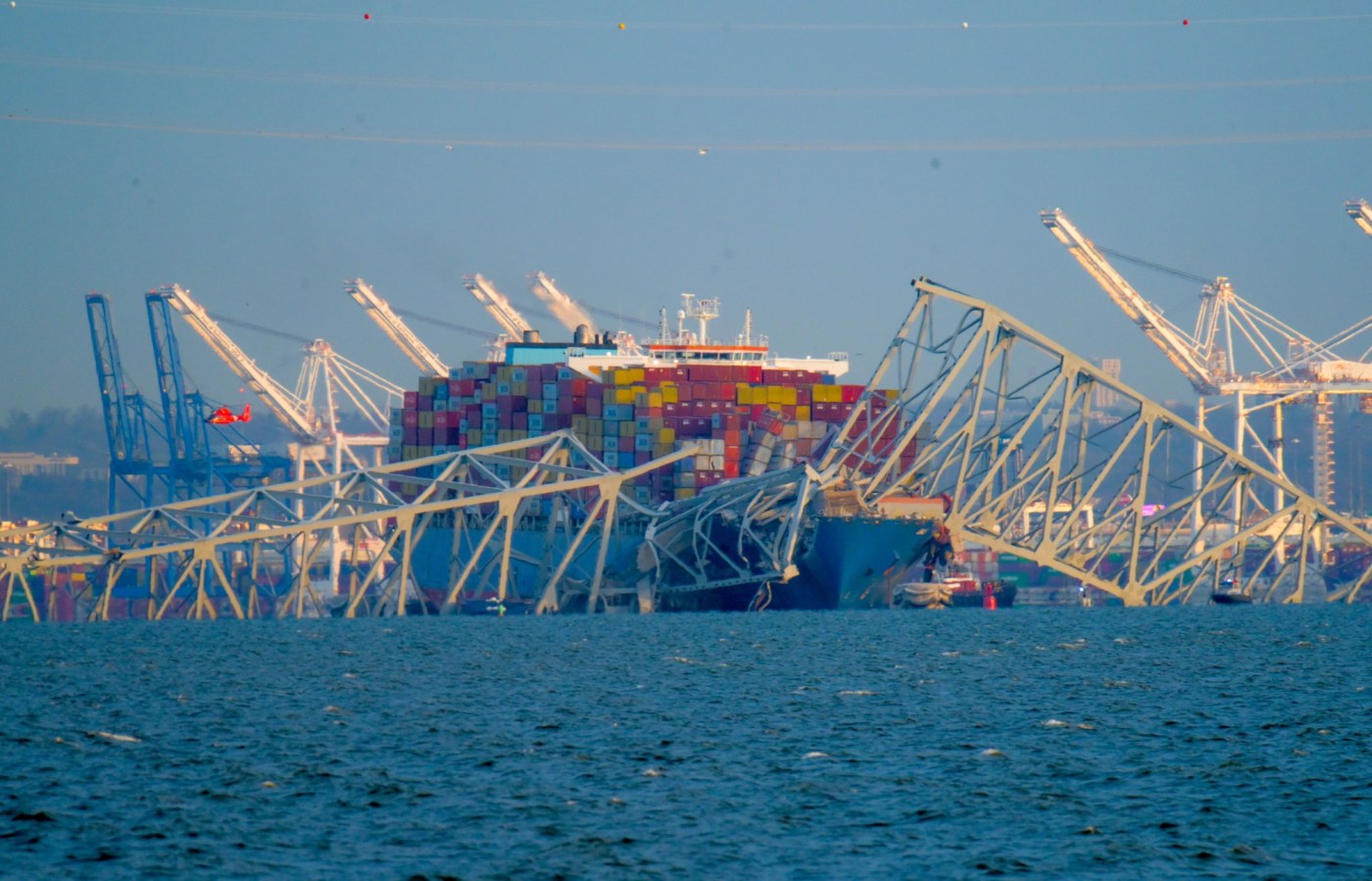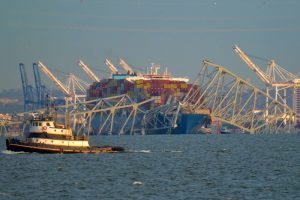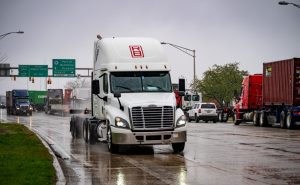
A ‘once-in-a-career situation’: Baltimore’s Key Bridge dive team faces many challenges
Extend your arm in front of your body. Now imagine you can see no farther than your forearm. Next imagine a flurry of fine silt clouding your already darkened view to almost nothing in every direction. Now picture yourself doing this in frigid water, pulled by a strong current.
Those challenging conditions are among the hurdles faced by divers working in the Patapsco River to recover the bodies of several construction workers presumed dead following the collapse of the Francis Scott Key Bridge in Baltimore. Authorities have been searching the waters where the bridge once stood since early Tuesday morning when a cargo ship crashed into the span, causing most of the 1.6-mile bridge to topple.
Late Tuesday, authorities announced they were shifting the operation from a rescue to a recovery mission, presuming the six people who remain unaccounted for following the collapse could not have withstood the sub-50 degree waters for the entire day.
Wednesday evening Maryland State Police announced they had recovered the bodies of two men, Alejandro Hernandez Fuentes and Dorlian Ronial Castillo Cabrera, found inside a pickup truck beneath the water. The remaining victims, trapped beneath the wreckage, must be extricated via a salvage operation, officials said.
Baltimore Fire Chief James Wallace said divers worked throughout the day Wednesday after a careful assessment of the debris field. Overseen by the U.S. Coast Guard, dive teams have come from numerous local departments including Baltimore City’s fire and police departments, Baltimore County’s police and fire departments, Maryland State Police, Maryland Natural Resources Police and crews from Prince George’s and Anne Arundel counties.
Scott Parrott, a Baltimore fire captain who has been working on the dive team, said divers have faced enormous challenges in the Patapsco’s murky, cold waters, chief among them visibility. When divers submerge themselves, they have 12-16 inches of visibility, Parrott said. When the bridge collapsed, however, the concrete and asphalt that covered its roadway turned to a fine silty dust. That silt is stirred when divers move around the water, he said, clouding their visibility to almost nothing.
Absent visibility, divers have been relying heavily on sonar imagery of the wreckage below the water. That sonar, which can detect vehicles and also human remains, located several vehicles beneath the surface, Wallace said. So far, the operation has been focused on five vehicles — three passenger vehicles; one construction vehicle, likely a tow-behind cement mixer; and one unidentified vehicle, he said. All have been found within 20-30 feet of where the roadway landed, despite the strong current, Wallace said.
Parrott said divers have approached each of the vehicles located by sonar and were able to search inside. Crews have also checked a 15-20 foot perimeter around each vehicle in case an occupant may have been able to escape.
Authorities have been aided by one of the survivors of the collapse, an unnamed Maryland highway inspector who was on a portion of the bridge that did not fall, Parrott said. That man was able to run to the end of the bridge and later gave the dive team information about the layout of the construction site, helping them estimate where vehicles and victims may have landed, Parrott said.
“Even though he’d been through a very traumatic experience, he was able to be an essential part of our initial response,” Parrott said. “I commend him because he was very shaken up. He almost died.”
There are still portions of the site that remain too unsafe for divers, Wallace and Parrott said. A wide berth has been given to the area around the ship itself. Some of the containers aboard are leaning precariously, creating a hazard, Wallace said.
“There’s a very strong possibility that they’re going to fall left off the ship,” he said.
As a safety measure, divers are also connected to lines that tether them to boats at the water’s surface, Parrott said. Those lines are wired for communication, so divers are in constant contact with the surface, Wallace added.
Parrott likened the sonar imagery divers are using to a flashlight in the woods. The light bounces back from trees, and there are dark spots behind them. If a body is hidden behind a metal object, it’s difficult to find, he said.
Related Articles
Titanic law helps ship owner limit bridge collapse liability
Port of Baltimore businesses pivot after Key Bridge collapse: ‘We’re already making alternative plans’
Key Bridge collapse: What we know about the six workers killed
Judge forges ahead with pretrial motions in Georgia election interference case
Steward Health Care’s tentative sale to UnitedHealth raises concerns in Massachusetts
While the challenges are numerous, the crews on site do have some advantages. Many of the agencies involved have trained together in the past, Wallace said, doing practice dives in the Patapsco and elsewhere in the Chesapeake Bay.
“They’re not seeing each other for the first time,” Wallace said. “As an incident commander, you always look for that level of continuity, and we certainly had it today.”
Parrott said he has trained previously in the area around the Key Bridge, although never in the shipping channel. Typically, Baltimore’s dive teams are searching for cars or people who have fallen into the harbor, sometimes capsized boats, he said. The scale of the wreckage crews are now navigating, however, is unthinkable, he said.
“This is a once-in-a-career situation,” Parrott said.


